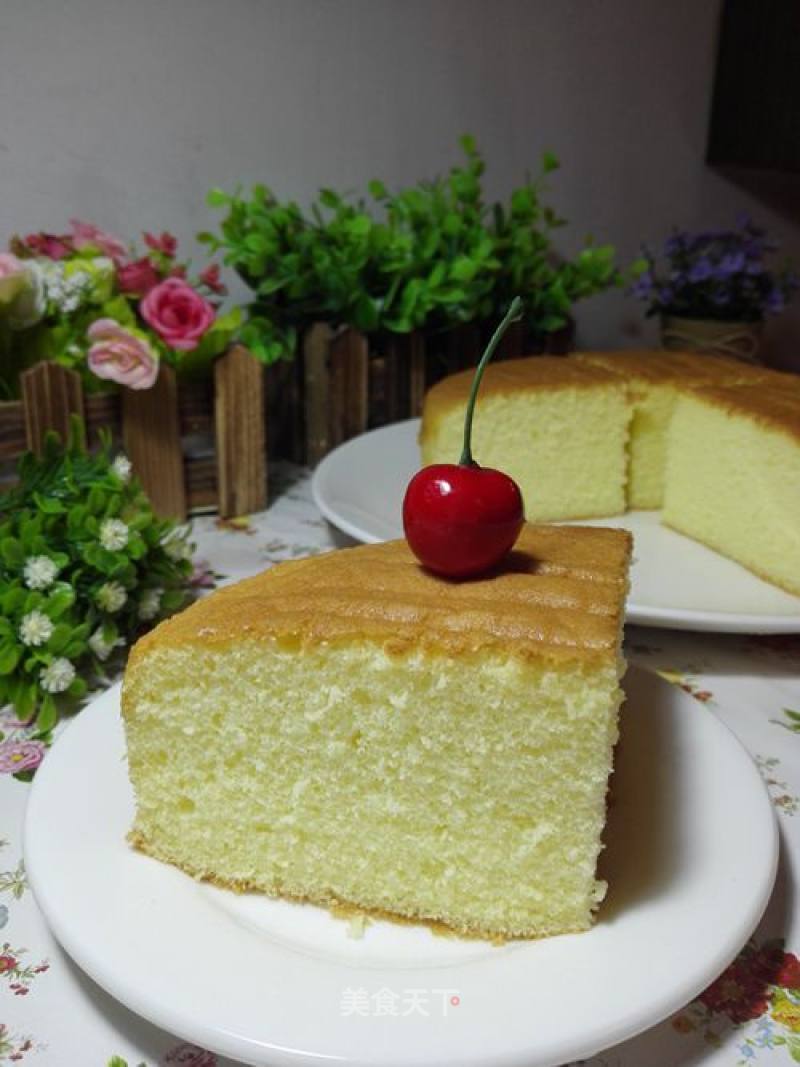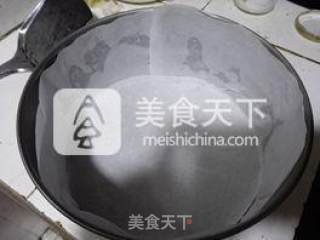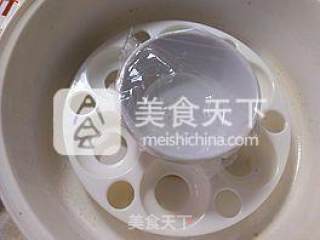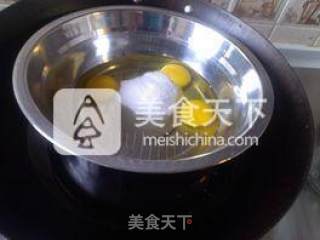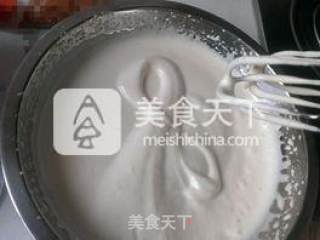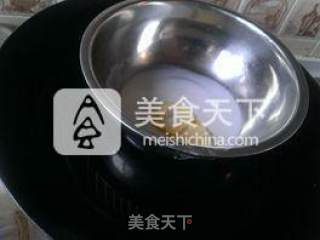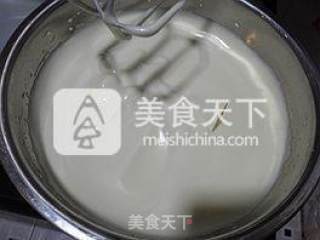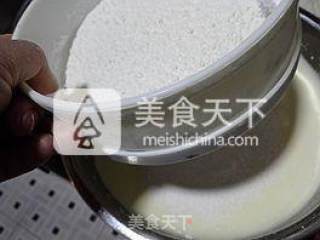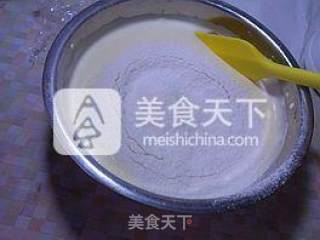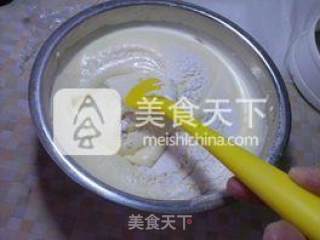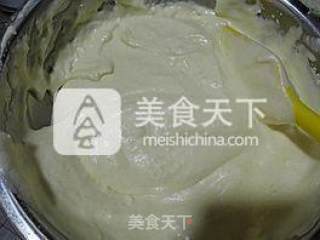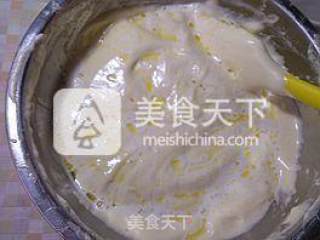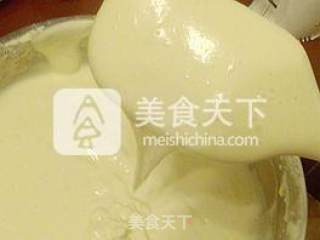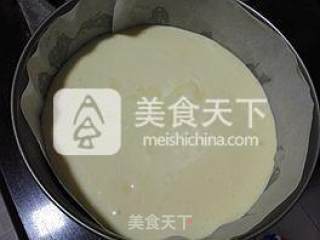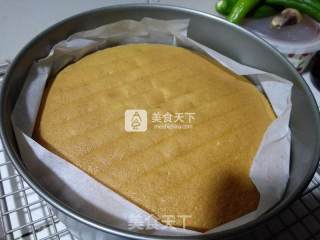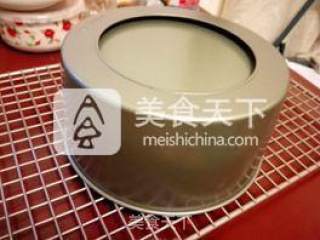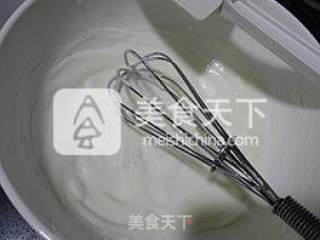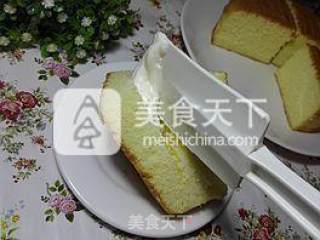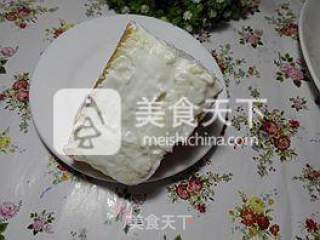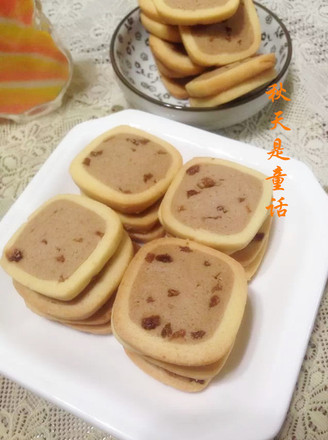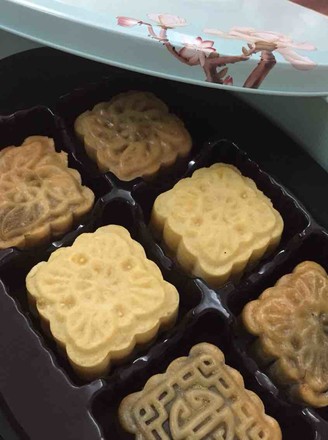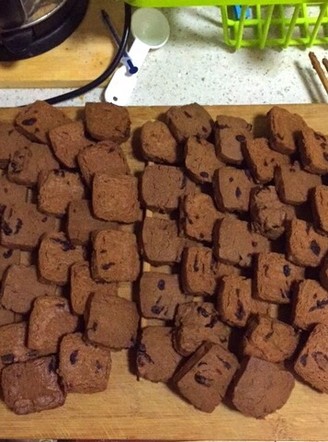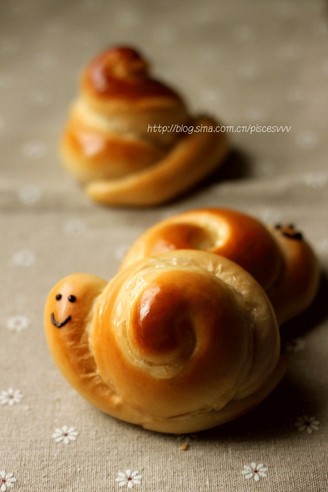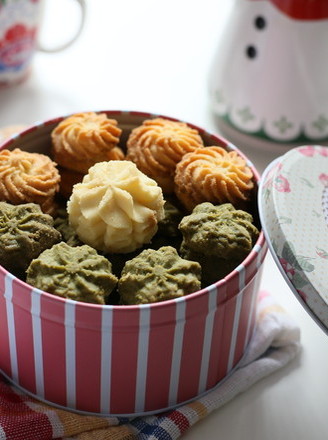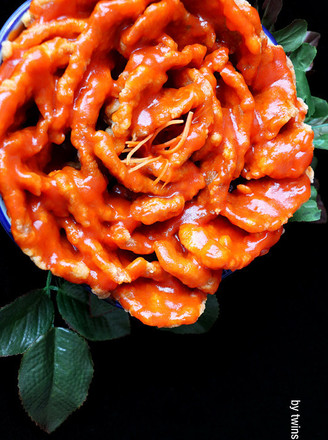#aca烤明星大赛# Teacher Xiaoji’s Sponge Cake
1.
Cover the bottom and sides of the mold with baking grease paper for use
2.
The water syrup is covered with plastic wrap to soften it by heating (the Mongolian plastic wrap is to prevent water mist)
3.
Sift low-gluten flour for later use
4.
Add sugar to the eggs and stir well, put the pot into hot water and heat insulation water and stir. When the temperature reaches 40 degrees, add the water syrup and stir well, and leave the pot with the hot water and place it on the table to continue to beat (this time you can set the oven temperature up and down) The fire starts to warm up at 160 degrees)
5.
Adjust the egg beater to high speed for 3-4 minutes, until the egg liquid becomes white and sticky, and will not break when dripping. Pick up the egg liquid with your hand and draw a figure of 8. The drawing is still clear and it is clear. All right
6.
Put the basin of butter and milk into hot water and heat the water to melt the butter
7.
Turn the whisk to a low speed, as mentioned earlier, in one position for 10 seconds, turn the pot counterclockwise slightly, and in the next position for 10 seconds, then turn the pot counterclockwise slightly, and so on. It can be seen that the large bubbles are reduced by the whisk, and the egg batter becomes very delicate and bright. Beat for 2-3 minutes, take a toothpick and insert it into the egg batter 1 cm deep, and the toothpick will not fall or fall slowly.
8.
Sift in the low-gluten flour that has been sifted before
9.
Now I started to stir the batter. In order to make the picture clearer, I took it to the table, turned on the lamp, and paid attention to my technique: the rubber spatula cuts in from the upper right of the basin, keeping the blade surface of the spatula perpendicular to the bottom
10.
Scrape the spatula along the diameter of the pot through the cake batter, to the lower left of the pot, pay attention to the side of the spatula always touch the batter
11.
Scrape to the bottom left and turn up along the edge of the basin
12.
With the left hand, quickly rotate the basin counterclockwise by 60 degrees, and then repeat steps 9-11, repeat this action continuously, maintain a certain speed, and scrape quickly and rhythmically until no dry powder can be seen
13.
Pour in the melted butter and milk, it is best to use a spatula when pouring into it along the edge of the basin
14.
Repeat steps 9-12 to scrape the batter. Stir 80-100 times. Mix carefully until the cake batter is delicate and shiny. Use a spatula to scoop up the cake batter to flow down naturally and smoothly.
15.
Then pour all the cake batter into the mold in one go, smooth the surface, shake the mold twice to break the large bubbles on the surface of the cake batter, and put it into the preheated oven
16.
Bake at 160 degrees for about 35 minutes. When the surface of the cake is light brown, take it out and drop the mold from a high place to discharge the heat in the cake to prevent the cake from shrinking.
17.
Place the cake upside down on a cooling rack and let it cool completely. (Because the mold is covered with greased paper, the cake will be separated from the mold when it is upside down. Remove the greased paper and buckle the mold on the cake so that the cake will not dry on the surface when it cools.
18.
Mix 80 grams of cream cheese, 15 grams of powdered sugar, and 50 grams of whipped cream. Stir in insulated water until smooth
19.
Cut the cake into four pieces, scoring two cuts on each piece
20.
Fill the cheese batter into the cake cuts
21.
Spread the cheese paste on the two slices
22.
Dip it with pork floss or milk powder and it becomes a delicious cheesecake. I don’t have milk powder or pork floss in my house, so I just dip some coconut paste, which is not bad!


Tips:
1 When making sponge cakes, the amount of sugar can be slightly more. Although the amount of sugar will slow down the blowing speed, it will increase the strength of the bubbles. The whipped egg liquid is as rich in bubbles as cream, fine and even. Add the sugar to the egg to make fine and flexible bubbles, then add the flour, and then mix it carefully until the flour is moderately gluten to support the bubbles. In this way, the baked cake has a uniform texture, a fine texture and a soft taste. When whisking the whole egg, you must hold the whisk and draw a large circle in the basin to beat at high speed. When the egg batter flows down and is as fine and smooth as a ribbon, start to adjust the bubbles, that is, adjust the whisk to a low speed and beat in one position. Seconds, turn the basin counterclockwise slightly, and spend 10 seconds at the next position and then rotate the basin counterclockwise slightly until the basin is turned 2 times. This will make the sparse large bubbles disappear, and the foam will become more uniform, delicate and not easy to break.
2 Stirring is also very important. Many people fail to make sponge cakes because of this. Obviously dismiss the batter in place. Add flour and stir to defoam! Then this cake is doomed to fail. This is because the mixing method is wrong. Generally, many people use the cutting and mixing method, and the sponge cake is made by using the surface of the spatula to scrape the cake batter carefully and vigorously. Add flour and stir at least 80 times. Until the cake batter appears shiny and the flour has gluten, it can strongly support the fine-textured foam. This way, the cake has a uniform color and a delicate taste.
3 It is best to eat the cake within two days of refrigeration. It can be stored for two weeks in freezing. It can be eaten after natural thawing. Whether it is refrigerated or frozen, the cake should be sealed to avoid smell.

